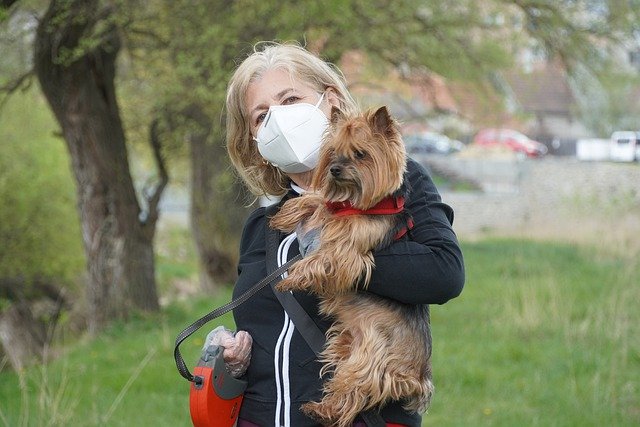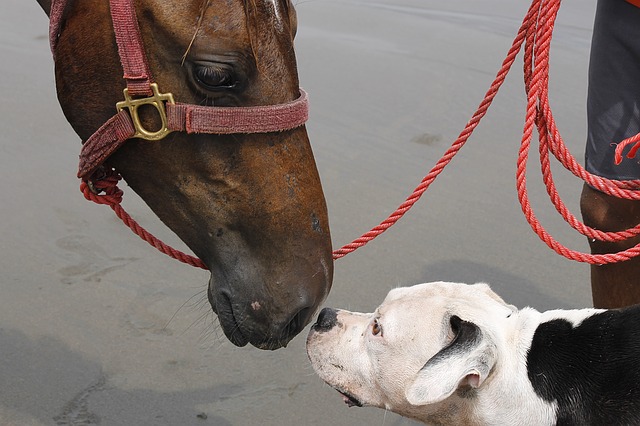A dog in Georgia is believed to have been the second canine in the U.S. to test positive for the virus that causes COVID-19. The 6-year-old mixed breed dog was tested after its owners contracted COVID-19 and the dog began suffering from a neurological illness, the Georgia Department of Health said in a news release last Wednesday. The dog was positive for SARS-CoV-2, the virus that causes COVID-19.
Sadly the dog had to be euthanized after the neurological illness progressed. Officials said the dog’s neurological illness was caused by a condition unrelated to the coronavirus. They did not elaborate anymore (perhaps purposely) on the previous condition.

Back in June, the U.S.D.A. announced that a German shepherd in New York had become the first pet dog in the U.S. to be tested and confirmed positive for the coronavirus. One of the German shepherd’s owners had tested positive for COVID-19, and the dog had showed some signs of respiratory illness, the U.S.D.A. said. That prompted testing at a private veterinary facility, and the presumptive positive results were reported to government officials. Those results were confirmed using swabs as well as blood tests for antibodies. Another dog in the German shepherd’s household had showed no symptoms but was also tested and found to have coronavirus antibodies, suggesting it had been exposed to the virus. Yep, just like humans, apparently dogs can contract COVID-19, yet show no symptoms.
There was a pug named Winston in North Carolina who, through a study conducted by Duke University, was initially confirmed as having tested positive for COVID-19 back in April. Three of his family members/owners had been infected with the virus, but recovered. The family noticed that Winston had symptoms that made him appear ill. He was sluggish, sneezing, and breathing heavily, and didn’t finish his breakfast one morning. But shortly after, the U.S.D.A got involved and claimed to do their own tests with results on May 27th saying “no virus was isolated, and there was no evidence of an immune response”. They claimed the detection in his saliva could have been contamination from the COVID-19 positive household. Hmmm…..
There were also two dogs that tested positive for COVID-19 in Hong Kong, as well as a cat in Hong Kong, a cat in Belgium, and two cats in New York (from two different households). What was interesting in the New York cases is that in one of the cases, the owner had tested positive for the virus. But in the other, no human in the household had tested positive for COVID-19!!

And of course we all know about the first tiger at the Bronx Zoo who tested positive and allegedly contracted it from a zoo employee who had shown no symptoms. In the end, five tigers and three lions had contracted COVID-19 at the Bronx Zoo.
As far as lab testing, there was a study published in Science that suggested domestic cats can infect one another. Chinese researchers inoculated a number of cats with the virus, and placed three of the cats in cages alongside other caged cats, which had not been inoculated. The virus RNA was found in all the inoculated cats and in one exposed cat, but not in the other two exposed cats.
A similar, but more recent paper was published by researchers from the US and Japan in the New England Journal of Medicine last week. The researchers isolated the coronavirus from a human patient and administered it to three cats. COVID-19 showed in nasal swabs of two cats the following day, and in all three within three days. The day after administering the virus, the researchers placed a second cat in each cage. These three were not administered the virus. Within six days, all of the cats were shedding the virus! And all of it was detected in nasal swabs, but none in rectal swabs. Each cat shed COVID-19 for up to six days. None of them showed symptoms, and eventually all of them got rid of the virus.
When COVID-19 first broke out around the world, we were told that pets could not contract the virus. After the first dog in Hong Kong tested positive via blood samples (testing positive via the nasal passages wasn’t convincing enough for veterinarians who at first insisted that it was just trace amounts residing in the nose that were picked up off the floor or furniture- just like with Winston!) the “experts” changed their tune and said it is highly unlikely a pet can contract COVID-19. Sure enough in the following weeks and months, more and more animals contracted COVID 19 (most likely from their owners). Laboratory tests proved that cats and ferrets can easily pass COVID-19 to each other. The American Veterinary Medical Association has stated “At this time, there is no evidence that animals play a significant role in spreading SARS-CoV-2 (COVID-19). And, based on the limited data available, the risk of animals spreading COVID-19 to people is considered to be low. While we are recommending these as good practices, it is important to remember that there is no reason at this time to think that domestic animals, including pets, in the United States might be a source of infection with SARS-CoV-2 (COVID-19)”. They do not even mention the possibility that an infected cat or dog that licks themselves may transfer the virus via their hair/fur. What about pet owners that “kiss” or get super close to their cat or dog that has COVID-19 in their nasal passage? The nursing home in Kirkland, Washington was one of the first U.S. cluster outbreaks of COVID-19 in early March. That nursing home was also home to a number of residents’ cats! There were also mink farms in the Netherlands that were shut down after farmers were confirmed to have contracted COVID-19 from the very minks they were raising.
Do you personally know of any pets that have been tested for COVID-19? Of course not. How do I know that? Because routine testing of animals for COVID-19 is not recommended by the AVMA, CDC, USDA, American Association of Veterinary Laboratory Diagnosticians (AAVLD), National Association of State Public Health Veterinarians (NASPHV), or the National Assembly of State Animal Health Officials. In fact, they have made it terribly difficult and thrown up a lot of red tape in order for a veterinarian to test a pet. The USDA released an FAQ months ago that cautioned against pet testing. “At this time, testing for companion animals will only be done if animal and public health officials agree testing should occur due to a link to a known human case of COVID-19,” it reads. “We will not be testing the general companion animal population.” The document effectively prevents labs from broadly testing companion animals for SARS-CoV-2 (COVID-19) without USDA approval! It’s very convenient to claim that animals a)can’t pass Covid-19 on to humans and b) that animals are “unlikely” to contract COVID-19 from their owners when there is simply no data to prove those statements one way or the other. There’s no data because the powers that be have effectively prevented the testing of companion animals.

So why the reluctance to admit that pets can a) contract COVID-19, b)Transmit COVID-19 (via their hair/fur or any other way) to humans and c)Test dogs and cats? Fear. Fear that if indeed pets do play a larger role in transmitting the virus, they will be forsaken by their owners. The reality is, there are probably more pets being impacted by owners who have contracted the virus and not been able to care for their pet(s) than there ever would be by owners through abandonment. Why wouldn’t owners simply treat their pets like they would any other family member who contracted the virus? It is likely then, also a fear of causing panic among the general population- pet owners and non-owners alike. Another argument is not wanting to put animals through unnecessary testing. Also, there are roughly 150 million dogs and cats in the United States. We’ve had a difficult enough time dealing with testing for humans. Perhaps the government agencies do not want another problem on their hands in terms of administering tests and ultimately having to issue guidelines in terms of what to do if your pet does test positive. What’s really great about the situation is how each agency and association keep touting the “low numbers” of cases/incidences. At the same time, since they’ve made it ridiculously difficult to get a pet tested, there’s no way to know what the truth is. In multiple cases and lab tests, just like in humans, there were many animals that tested positive for COVID-19, yet showed no signs or symptoms of the illness. Even if they initially contracted the virus from their human owner, what’s to say they and other animals aren’t the ones passing it to second and third human members of the family? Up until now, we always assume that if a second or third or fourth person in a family contracts the virus, it was most likely transmitted by the person in the family who first contracted COVID-19. But what if it turns out pets have some roll in the transmission too? We’ll never know if they do until more testing is allowed. Just because a pet in a house where a human tested positive does not show symptoms, it does not mean they should not be tested. They, like any other member of the family, should be allowed to get a test.
The good news is that most pets seem to recover on their own (the Pomeranian in Hong Kong who died a couple of weeks after testing positive for COVID-19 was 14 years old and the owner refused an autopsy), and some don’t seem to get any noticeable symptoms. Others, however, will and have experienced diarrhea, vomiting, coughing, sneezing, etc. As of this writing, there have luckily been no known equine cases associated with COVID-19. But as many of you also have dogs and cats of your own (not to mention dogs and cats are common around barns), we thought it was important to at least bring this to your attention so at the very least, you can stay vigilant and be your pet’s best health advocate. It’s not clear that anyone else will be.
Stay safe out there!







